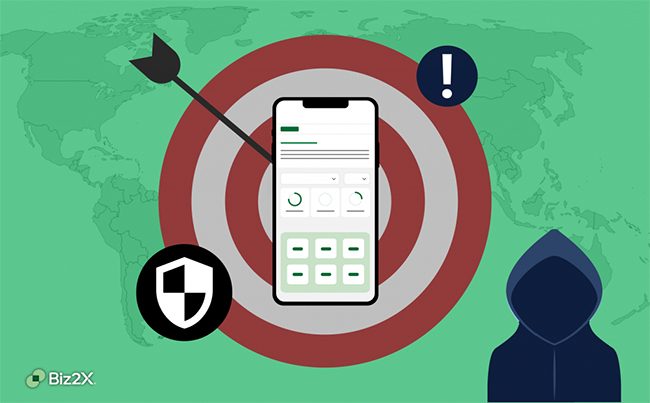
Industry 4.0 emphasises the importance of automation to fast-track the development and deployment of products in the banking and finance sector. In the traditional banking model, the lending process is paperwork-heavy for the customer and expensive for the bank. With the outbreak of the Covid-19 pandemic, customers are avoiding visiting branches and in favor of digital lending thus betting big on intelligent automation will enable financial institutions to future-proof their operations, preparing them to serve customers in the post-pandemic era. By automating critical, highly repetitive processes for humans enables reallocation of resources to higher-value work efforts to drive better efficiencies in organisations. It helps organisations to deliver smarter automation, creating more value. Also, AI and Automation deployments can drive significant cost reductions, increasing revenue.
Usage of APIs for Loan Origination
The integration of API technology into legacy loan origination systems can cut down the processing time and reduce operational costs.
API technology in loan origination system focuses on the following:
- Automated data collection from the customer
- Digital verification of the documents
- Automation of the underwriting process
- Third-party integrations to the loan origination system
Connected to the India Stack using Aadhar, PAN, GST, etc
The India Stack (or Aadhaar Stack) is one of the most widely discussed topics today in fintech, and a must-talk-about term in any conversation around identity, data, biometrics, or government services. It is a set of APIs that allows governments, businesses, startups, and developers to utilise a unique digital Infrastructure to solve India’s hard problems towards presence-less, paperless, and cashless service delivery.
Central Know Your Customer (CKYC) – introduction
The Central Registry of Securitisation Asset Reconstruction and Security Interest of India (CERSAI) performs the functions of the Central KYC Records Registry (CKYCR). The CERSAI will manage know your customer (KYC) records in digital form for a client.
The main objective of CKYC is to provide a platform that allows investors to complete their KYC only once before interacting with various entities in the financial services sector. Also, video KYC is now permitted as e-KYC by the RBI.
Benefits of video KYC:
- Remote Customer Onboarding
- Faster KYC Completions
- Dropoff Reduction
- Cost Optimisation
- Customer Convenience
- Enhanced customer experience
Alternative Credit Data for Auto-Underwriting
Alternative credit data is a broad term which refers to all the credit data currently not reported on traditional credit reports. If used correctly, this type of additional credit data can strengthen the credit profile of someone who’s lacking in traditional credit data. Alternative data-based Auto-underwriting is quicker and more secure.
Using Bank Statements, Supplier Info, POS Data, etc
Traditionally, all of these documents would be reviewed by humans, who extract key data points and enter them into spreadsheets or other downstream systems for analysis. It’s a cumbersome, time-consuming process.
An intelligent commercial banking automation tool would help the bank in a number of ways. It could then “read” the documents and extract the relevant data points required for downstream processors to make an informed decision on the application.
Comprehensive digital scoring for better loan repayment rates as well as for aggressive growth of the lending book
Digital credit scoring is the use of digital footprints to calculate the credit score. allows lower transaction costs and instantaneous loan approvals and disbursements. By using digital credit scoring, credit officers in microfinance banks (MFBs) and MFIs are enabled to make more informed lending decisions.
AI/ ML-based Analytical engine to collect and analyse across the platform data
AI, Data Science, and Analytics based platforms manage and analyze large amounts of data. They uncover hidden patterns, correlations and offer deeper insights to innovatively visualise results for better decision making.
These platforms utilize the combination of leading technologies on the cloud with AI/ML capabilities, Natural Language Processing, Real-time Data Processing, Predictive Customer Touchpoints, Customer Relationship Management, Loyalty Management, Governance, Risk and Compliance, and Advanced Analytical Models.
Fully configurable rules engine as well as workflow to accommodate regulatory changes e.g. including moratoriums in the loans like was done during Covid
With increasing automation and introduction of Straight Through Processing of loan applications, it is necessary for a lending institution to have control over their policies. This is required since lenders undergo constant changes in their credit policies and for them to be able to apply modified policies without IT intervention, creates a demand for configurability within these policy parameters
Straight Through Processing throughout various origination/underwriting activities through execution of configured rules and also allows lender to preset/modify policy thresholds through an intuitive user interface
Continuous Monitoring of the Loan digitally through a consent-based architecture
Continuous Loan Monitoring is a state of art risk profiling that can be used to unearth the opportunities and risk associated post disbursement, thereby providing a ageing based comprehensive view of borrower risk profile and underlying opportunities there in to enhance the future of Fintech Lending.
- Post Loan disbursal monitoring
- Event based monitoring
- Covers entire Loan lifecycle
- Monitoring Dashboard with Colour representation of highlights
- Trend, Variance analysis for Revenue, Expense, DSCR, Net Earning
- Bank statement and GST powered monitoring
- Multiple bureau portfolio monitoring
- Fraud Alerts
- Complete business debt profile view
With the financial landscape changing with fintechs, intelligent automation can restructure processes and offer autonomous decision-making capabilities for process automation. For customer onboarding, fraud detection and loan underwriting, intelligent automation tools are being used aggressively by banks to offer seamless experience to the customers.
By Vineet Tyagi, Global CTO, Biz2X















